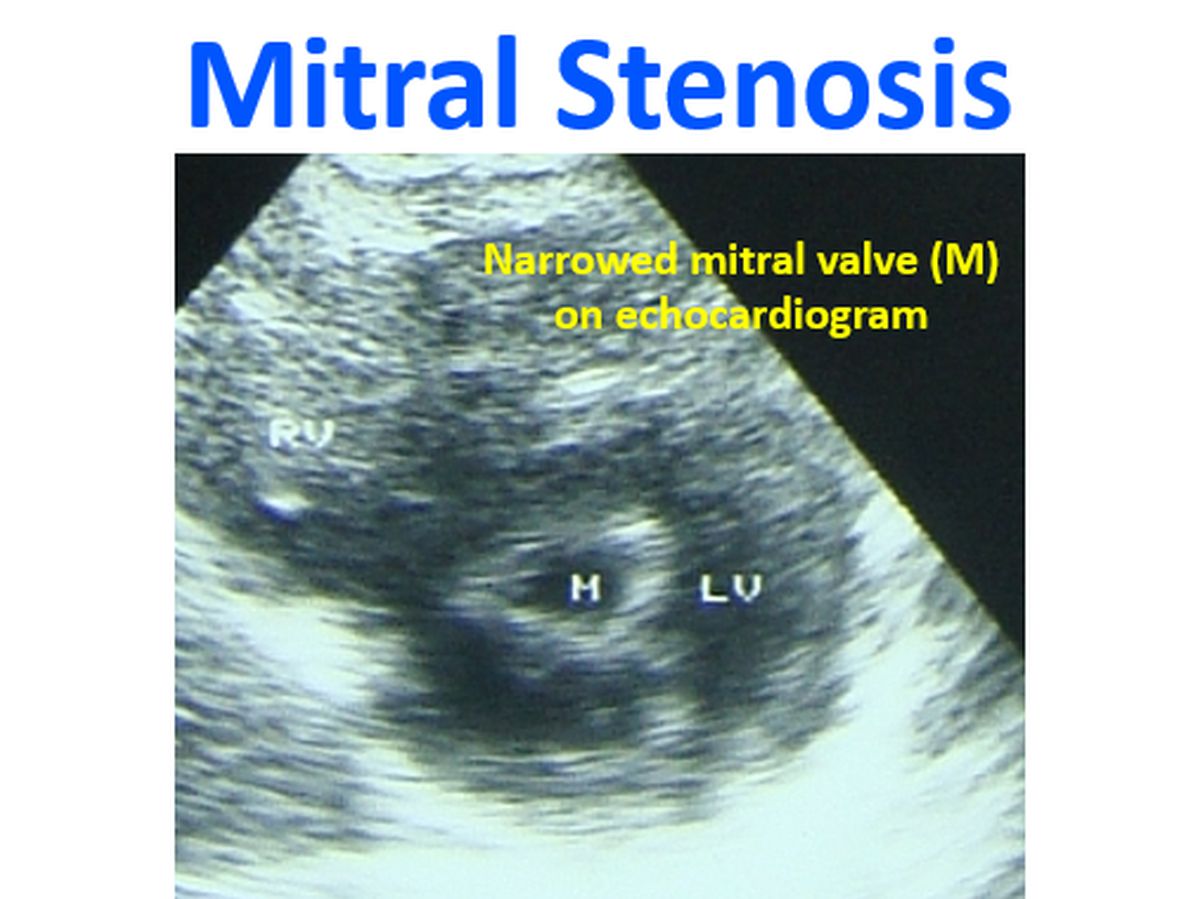Mitral Stenosis
Mitral Stenosis
Mitral valve is the valve between the left atrium and the left ventricle. It is named so because of the resemblance to the headwear of a bishop known as mitre. Stenosis means narrowing of the orifice of the valve. Hence mitral stenosis is the narrowing of the orifice of the mitral valve producing an obstruction to the free filling of the left ventricle as it relaxes after a contraction. The commonest cause of mitral stenosis is rheumatic fever. Congenital mitral stenosis occurs in a very small group and other causes are extremely rare. Hence if mitral stenosis is documented, especially in the developing countries, it is most often rheumatic heart disease as a sequelae of rheumatic fever in the past.

As the mitral valve becomes narrow, the pressure in the left atrium and consequently that in the pulmonary veins and capillaries rise. When the pulmonary capillary pressure reaches above 25 mm Hg, there is a chance for transudation of fluid into pulmonary alveoli. This is known as pulmonary edema and causes severe breathlessness. To begin with this occurs only during exercise while later on when the severity of mitral stenosis increases, this can occur at rest as well. Usually this occurs when the mitral valve is critically narrowed.
When the pulmonary capillary pressure is chronically elevated, it leads to reactive pulmonary arterial hypertension and right ventricular failure as a consequence.
The modern treatment of mitral stenosis is balloon mitral valvotomy if the valve is pliable and non-calcified. If the valve is calcified, attempts of balloon valvotomy may sometimes result in severe mitral regurgitation due to leaflet tear. This mandates urgent valve replacement. Hence elective mitral valve replacement is often resorted to in calcific mitral stenosis.
Abnormal rhythm of the heart known as atrial fibrillation can occur in long standing severe mitral stenosis as the left atrium becomes grossly dilated. In atrial fibrillation, which is a rapid, irregular fine contraction of the atria due to very fast atrial electrical activity, there is no effective atrial pump function and a virtual atrial stand still. This leads to stagnation of blood in the left atrium and a tendency to clot formation. Clots can get dislodged from the atrial wall and get carried by the blood circulation into other parts of the body.
This process is known as embolism and can lead on to severe conditions like stroke, if it occludes a blood vessel of the brain. Mitral stenosis patients with atrial fibrillation need medications to prevent clot formation known as anticoagulants. Clotting function of the blood has to be monitored regularly while taking these medications in order to prevent excessive dosage and bleeding manifestations, by a test known as prothrombin time with international normalized ratio or INR.
